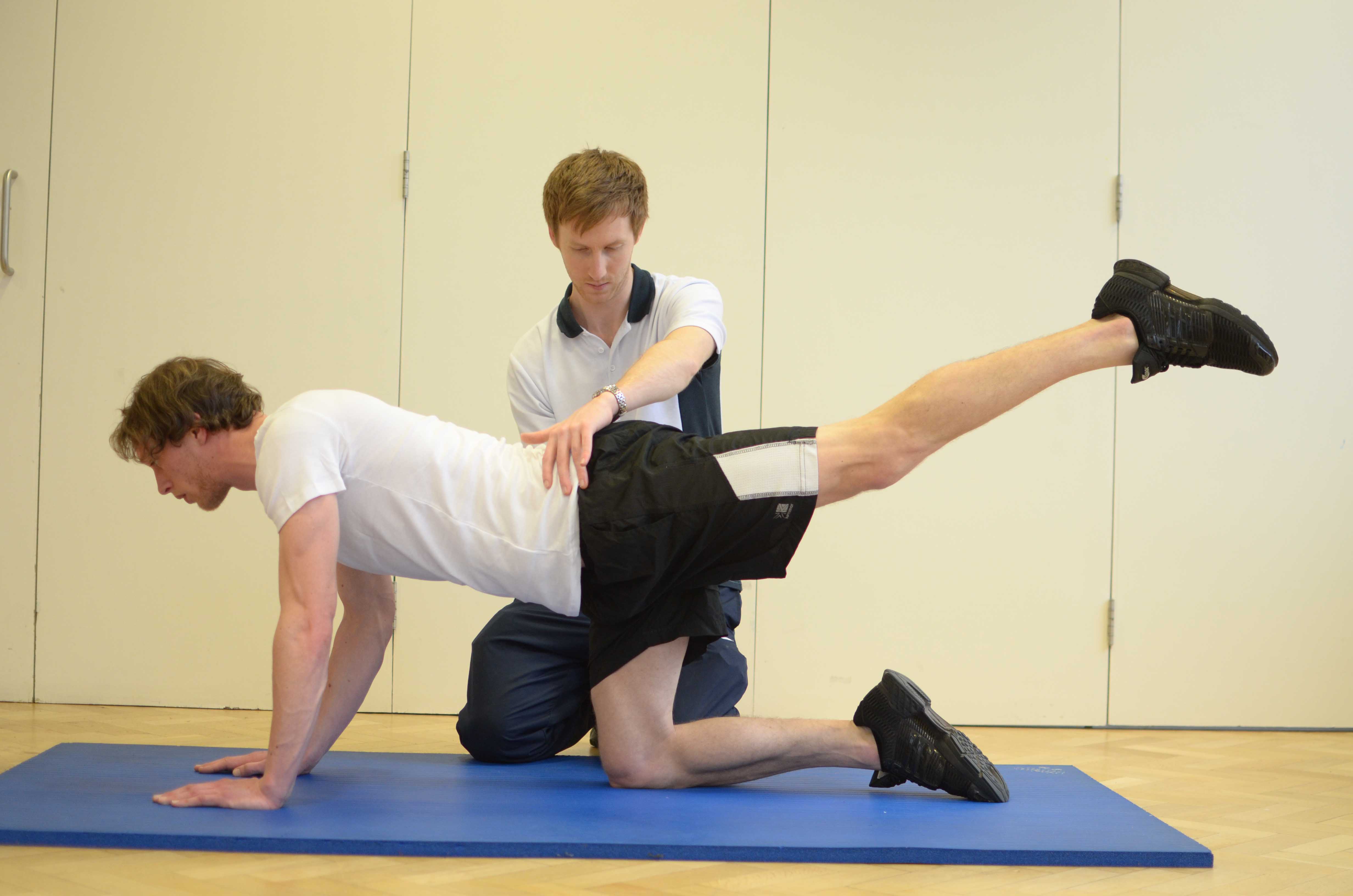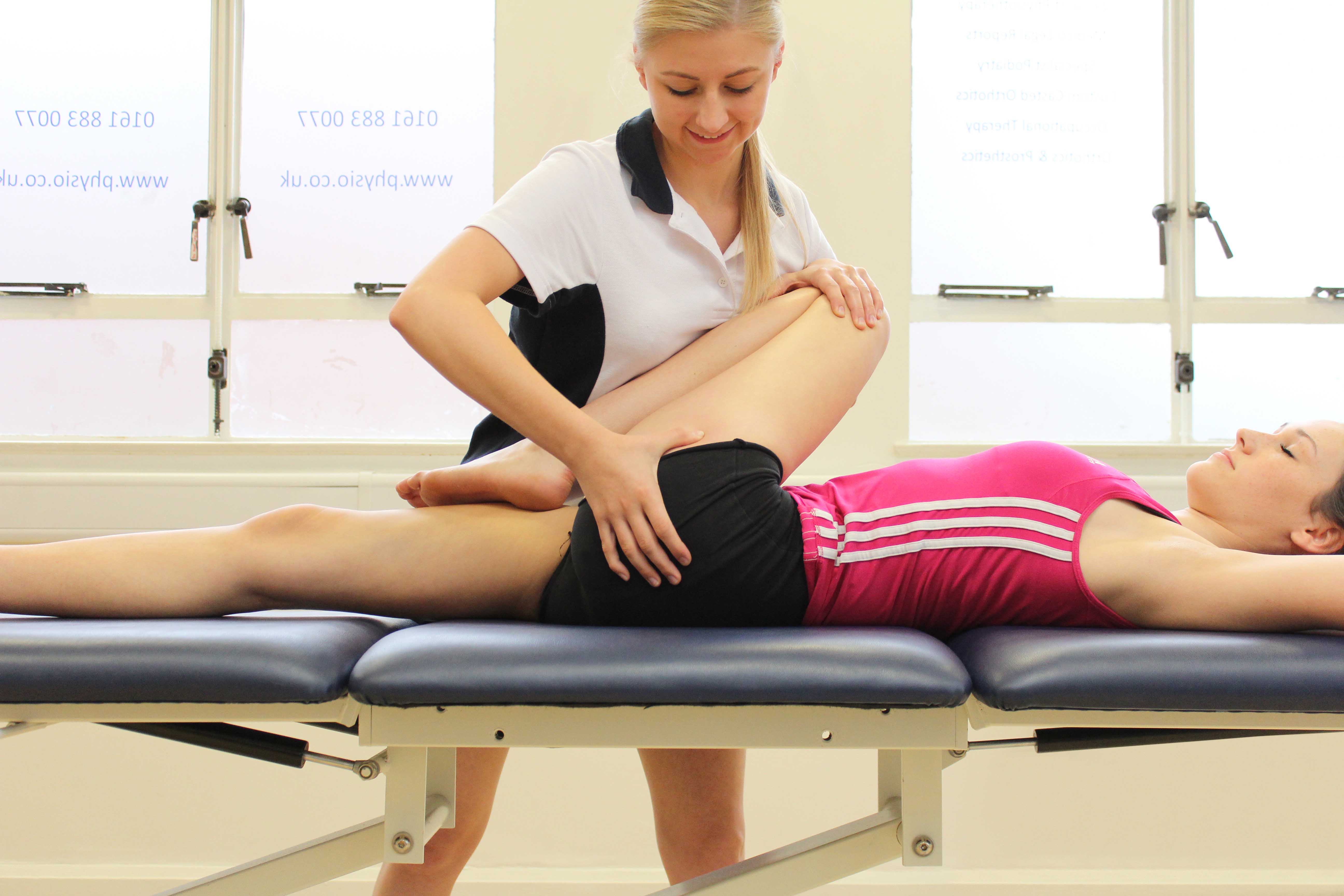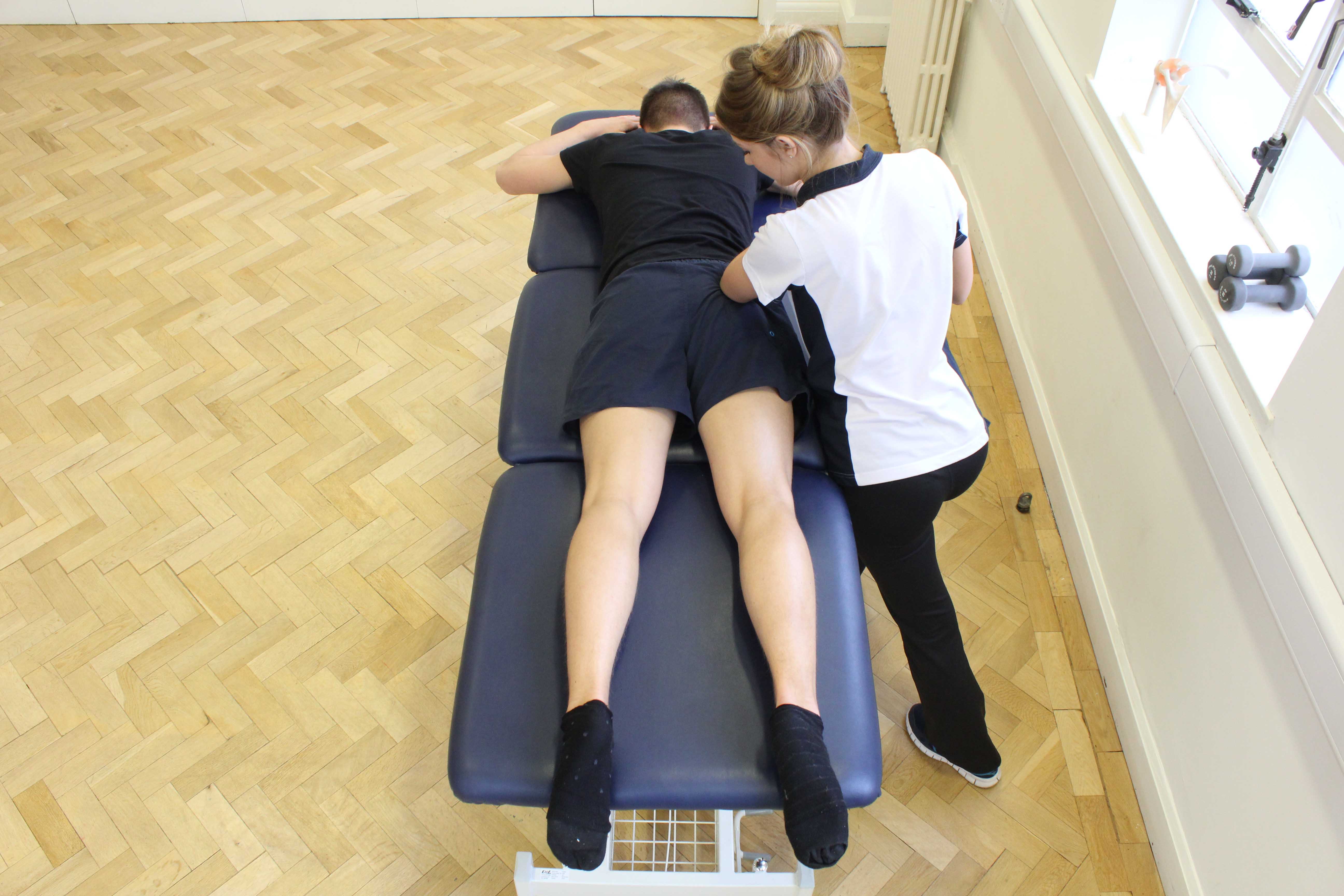Lumbar Facet Injection
A lumbar facet injection is a minimally invasive procedure to reduce pain and inflammation in the lumbar spine due to inflamed facet joints. Pain in this area of the back and leg is usually a result of arthritis, injury and mechanical stress. The effects of facet injections tend to be temporary – providing relief for several days or months. Physiotherapy treatment in conjunction with an injection will allow you to make significant long term improvements by increasing flexibility, strength and posture so that you can resume normal activities.
A facet injection includes placing a long-lasting corticosteroid and an anaesthetic numbing agent inside the joint capsule or in the tissue surrounding the joint capsule. Corticosteroid injections can reduce inflammation and can be effective when delivered directly into the painful area.
 Above: Strengthening and mobilisation exercises performed under supervision from a physiotherapist.
Above: Strengthening and mobilisation exercises performed under supervision from a physiotherapist.Facet injections may be helpful in treating inflamed facet joints caused by:
- Spinal stenosis - narrowing of the spinal canal which can irritate nerve roots and cause back and leg pain, especially when walking.
- Sciatica-pain that travels along the sciatic nerve in the buttocks and down the legs
- Arthritis - degeneration of the cartilage can inflame the facet joints causing pain and restricted movement.
Symptoms following lumbar facet injection
You may experience some soreness around the injection site. After the procedure you will be closely monitored for about 30 minutes to ensure that you are safe to return home. About 50% of patients experience some degree of pain relief for several days to several months.
 Above: Mobilisations of the vertebrea in the lower back
Above: Mobilisations of the vertebrea in the lower backPhysiotherapy following a thoracic injection
It is crucial to access physiotherapy treatment as soon as possible following your injection for the best possible recovery. Physiotherapy treatment will be specific to your symptoms and problem areas noted on the initial assessment. A combination of hands on techniques, exercise and advice will facilitate your recovery and ensure you make long term improvements.
 Above: Pain a nd discomfort derived from lower back pain
Above: Pain a nd discomfort derived from lower back pain1-2 weeks
In the initial stages of you treatment at Physio.co.uk, your physiotherapist will control any pain and inflammation using electrotherapy as well as advice on what is going on that might be contributing to your pain and how you can manage it at home. Physiotherapy will also focus on postural awareness and gradual exercise to get your back moving while your pain is minimal.Your rehabilitation programme will be suited to you in order to optimise your rehabilitation potential and prevent further injury. Physiotherapy may include:
- Electrotherapy including heat and ice therapy
- Active and passive range of movement exercises
- Stretching soft tissue to improve length
- Soft tissue massage to reducespasm by helping muscles relax
- Pain management
- Advice about positioning and movement to increase confidence and comfort in lying, sitting and standing.
2-6 weeks
At this point in your rehabilitation, your physiotherapist will focus on lower abdominal strengthening to facilitate better support to the lower back as well as improving flexibility using joint mobilisation and stretching. A programme of daily low impact exercises such as walking will be introduced to increase cardiovascular fitness and alleviate pain and stiffness. Physiotherapy treatment may include:
- Continuation of active and passive range of movement
- Graded joint mobilisation to help prevent stiffness, increase flexibility and reduce pain.
- Continued stretching exercises though range
- Fitness conditioning such as walking, swimming and stationary cycling to improve general fitness
6-12 weeks
Physiotherapy treatment at this stage will continue to strengthen the muscles around you lower back. Exercises will also be functional and related to your current goals. For example, sitting for extended periods, driving and doing housework. Physiotherapy treatment will consist of:
- Isometric strengthening exercises to activate the "core" muscles to help stabilise the lower spine. Once this is achieved this exercise can be progressed to include adding resistance with various arm and/or leg lifts while maintaining the taut abdominals and neutral spine in various positions.
- Continued aerobic exercises such as walking, swimming and stationary cycling
- Continued stretching exercises
- Functional training when you need help doing specific activities
12 + weeks
At this point in you treatment programme, your physiotherapist will ensure that you are reaching your goals by continuing to maximise the strength and flexibility of the lumbar spine as well as monitoring posture during functional activities.
Physiotherapy treatment following a lumbar injection will help you on the road to recovery by getting you to move your lumbar spine in a safe and effective way. Our motivated team of physiotherapists at Physio.co.uk will guide and support you throughout your rehabilitation programme to decrease your postoperative recovery and ensure you get the best possible results following your injection. Physiotherapy treatment will help restore pain free movement as well as improve muscle strength and function allowing you to continue with the activities you enjoy the most. Call Physio.co.uk now on 0330 088 7800 for more information or to book an appointment please contact us.
Read more about our Consultant Led Injection Services.

 0330 088 7800
0330 088 7800


































